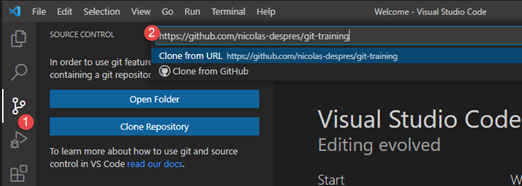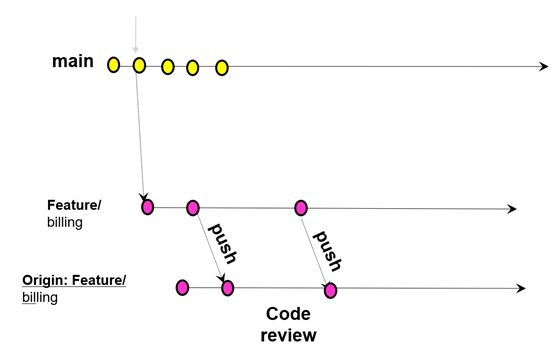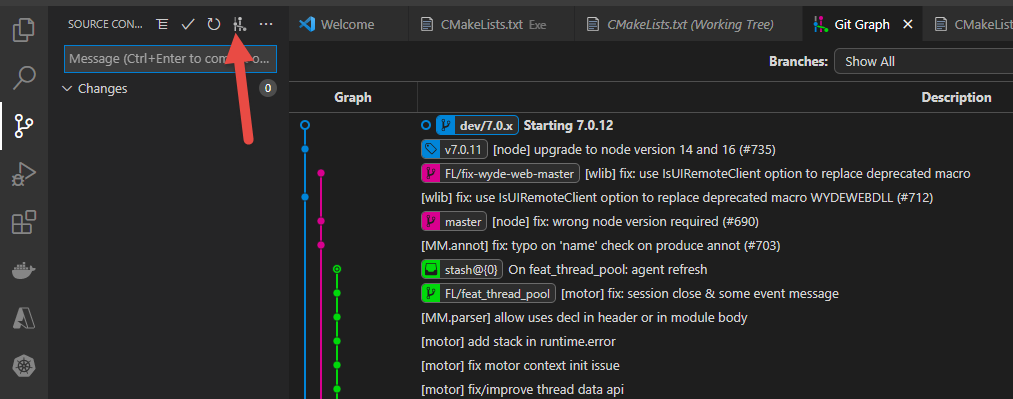Git and Github essentials
Introduction
What Is Git & Why Should I Use It?
Git is the most commonly used version control system. Git tracks the changes you make to files, so you have a record of what has been done, and you can revert to specific versions should you ever need to. Git also makes collaboration easier, allowing changes by multiple people to all be merged into one source.
But since our ewam source code is in TGV, why should I care?
Few reasons:
- All your configuration shall be stored in git:
package.json,Adminfolder, deploy scripts. So even for only that you should know about it - Some of your ewam code can be extrated to text and then reimported: you will see few examples with
ewam:cli - eWam 7.1 is coming up with full SCM support, get ready for it 💪
What is Github?
A platform for hosting and collaborating on Git repositories
Configure your github profile
- Visit https://github.com/settings/profile
- Set your name
- Select an avatar, it does not have to be a picture of you but please put something
- Click on Update profile
Glossary
Before starting the training, let's review together some definitions:
- commit: a Git object, a snapshot of your entire repository compressed into a SHA
- branch: a lightweight movable pointer to a commit
- clone: a local version of a repository, including all commits and branches
- remote: a common repository on GitHub that all team members use to exchange their changes
- fork: a copy of a repository on GitHub owned by a different user
- pull request: a place to compare and discuss the differences introduced on a branch with reviews, comments, integrated tests, and more
- HEAD: representing your current working directory, the HEAD pointer can be moved to different branches, tags, or commits when using
git switch
Reference material
You can have a look at the following interesting reference material:
- Git handbook
- Training from github
- Github flow -> this one is particularly interesting
- Interactive Git commands reference
Wyde Recommended Configuration
To preserve a clean git history we recommend to use a rebase as default when doing a git pull. Please run:
$ git config --global pull.rebase true
Configure your user information for all local repositories
$ git config --global user.name "[name]"
Sets the name you want attached to your commit transactions
$ git config --global user.email "[email address]"
The github main/master branch should be protected: no force push should be allowed.
Commit Convention
Try to be consistent with your commit messages, using for example: feat:, fix,: build:, chore:, ci:, docs:, style:, refactor:, perf:, test:
Github flow
We recommend to follow the github flow. Have a look at the documentation from github: https://guides.github.com/introduction/flow/
Exercise
Wow that's a lot of theory. Things are not that hard. Let's see an example.
- Visit https://github.com/nicolas-despres/git-training and click on the fork button (top right)
- Clone your repo locally

- Check your repo status using
git status
There are multiple ways of working with git. We recommand using git-flow.
Basically each feature is in a branch, when finished you create a pull request and ask someone to review it. Here is what we will do:

Remember to use VSCode git graph extension, that should help you visualize what you are doing:

- Create a the feature branch:
Git checkout –b feature/billing - Change readme.md
git add readme.mdgit commit –m "fix: typo"
- Create a file
test.jsgit add test.jsgit commit –m "test: add unit test"git push
- Create a Pull request
- The easiest way to create a PR is from the github project page: https://github.com/{your-name}/git-training/pulls
- Change readme.md
git add readme.mdgit commit –m "fix: detail added"git push
We use git command line in this tutorial but you can as well use the VSCode Source Control actions to proceed. At the end this should give the same result.
Other exercises
Don't feel confident yet? Check out additional exercises here: https://gitexercises.fracz.com/